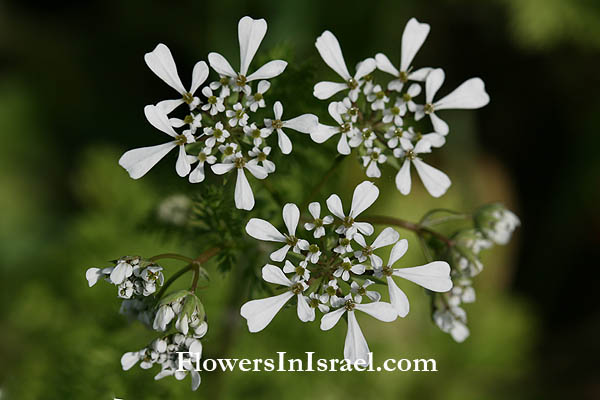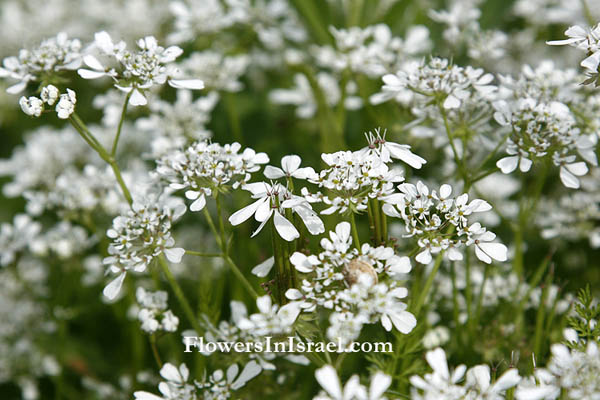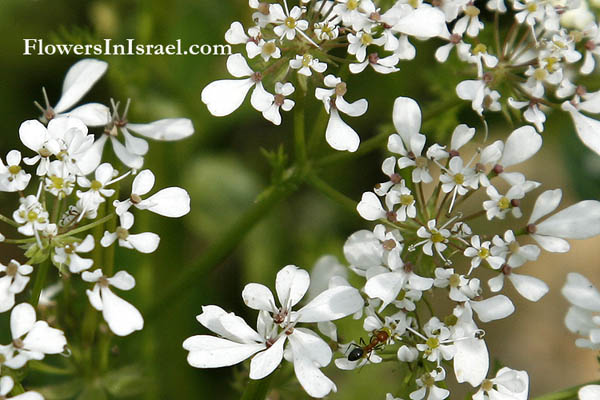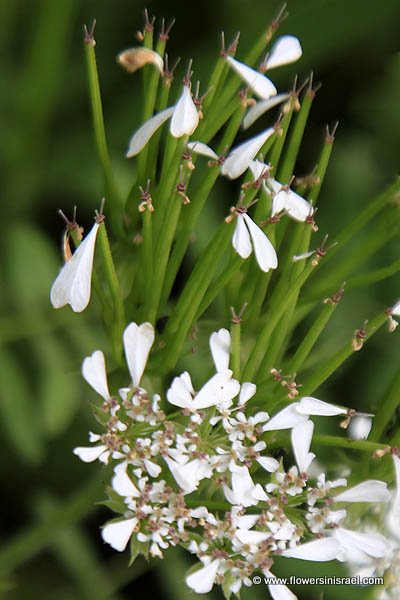Hebrew: מסרק מזרחי,מסרק איברי, Arabic: مش الراعي
| Scientific name: | Scandix verna O.Cohen | |
| Synonym name: | Scandix iberica M. Bieb | |
| Common name: | Shepherd's needle, Venus Comb | |
| Hebrew name: | מסרק מזרחי,מסרק איברי | |
| Arabic name: | مش الراعي | |
| Family: | Umbelliferae / Apiaceae, סוככים |

|
| Life form: | Therophyte, annual | |
| Stems: | 15-30 cm; branching, erect, or spreading, hairy | |
| Leaves: | Alternate, dissected, bipinnate or more | |
| Inflorescence: | Terminal, compound umbel of 3-9 rays | |
| Flowers: | White; style 5-7 times longer than widht of stylopodium; a few large outer petals | |
| Fruits / pods: | Very elongated fruit, fruit tip (remnants of the flower's pistil) divided in two | |
| Flowering Period: | March, April | |
| Habitat: | Batha, Phrygana | |
| Distribution: | Mediterranean Woodlands and Shrublands, Semi-steppe shrublands | |
| Chorotype: | Med - Irano-Turanian | |
| Summer shedding: | Ephemeral |

Derivation of the botanical name: Scandix, Greek skandix or skandikos which was used by Aristophanes (ca.456 – ca.386 BCE) and Theophrastus (370 — ca.285 BCE), to chervil, which later became the Latin scandix. verna, of or belonging to spring. iberica, of Spain. The Hebrew name: מסרק, masrek, New Hebrew, Venus’ comb, Scandix; from מסרק compare the English name ‘Venus’ comb’.



|